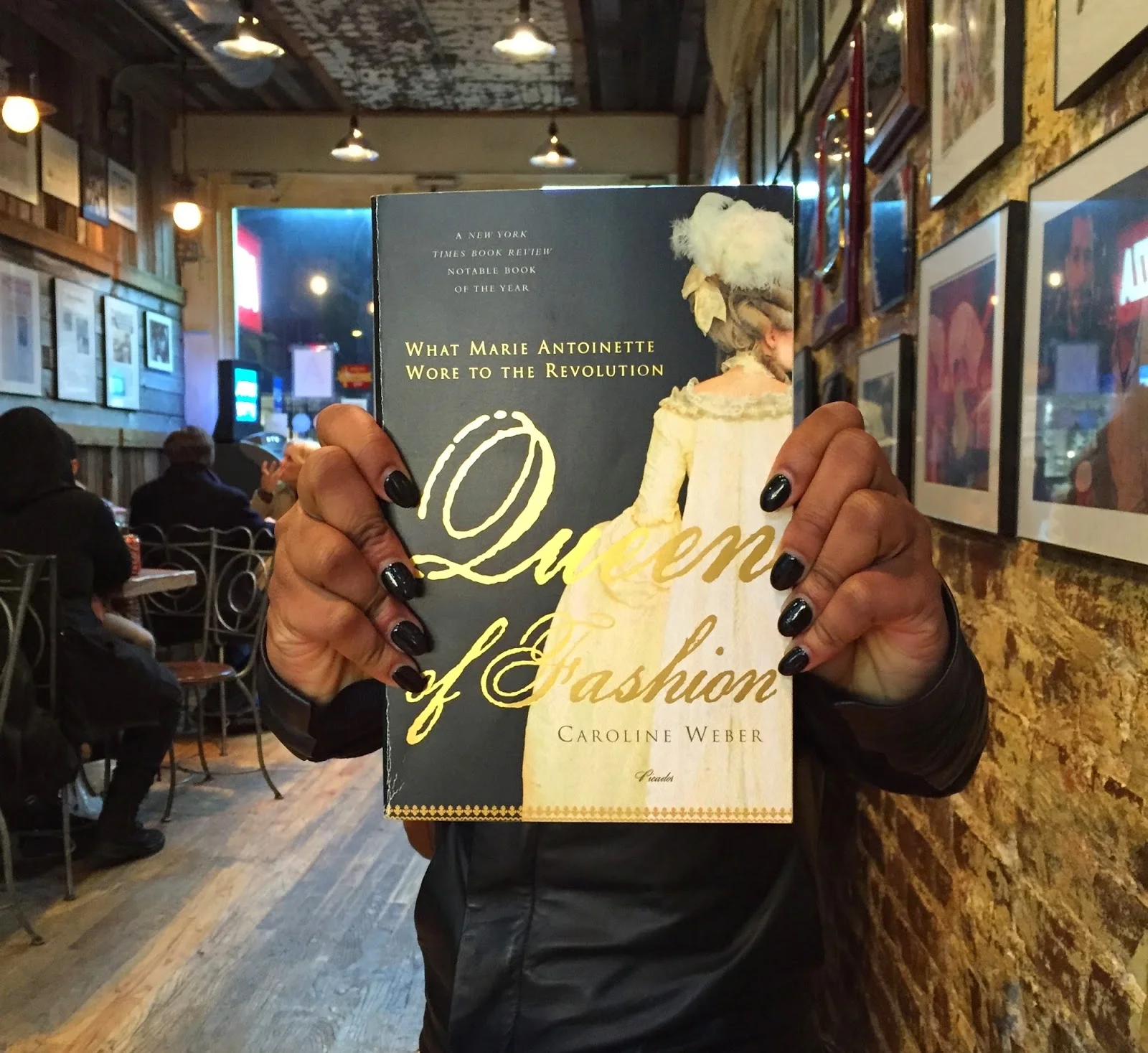Whilst conducting research for my upcoming book about the deeply rich world of haute couture, the art of hand made custom fitted clothing, I came across Rose Bertin, an 18th century Parisian milliner and dressmaker. I learned that Bertin was Marie Antoinette's favorite stylist and is credited for bringing haute couture and Fashion to French culture. She helped outfit the monarch in the extravagant outfits and accouterment that would solidify the French queen's place in history as a Fashion icon.
Google soon led me to Caroline Weber's QUEEN OF FASHION WHAT MARIE ANTOINETTE WORE TO THE REVOLUTION. In this book Weber, professor of French literature and culture, teaches us the impact that the queen's controversial clothing choices had on politics and the general public. After arriving in France at the age of 14, Marie Antoinette was severely scrutinized in every aspect of her life. Being of Austrian descent and a woman, her voice was limited. Marie Antoinette found a way to speak with Fashion and since the world looked to Versailles for the latest trends, everyone listened. Whether wearing expensive silks or dressing in a muslim chemise the queen was always making a statement. Women of these times had to use what was available to assert their authority or at the least appearance of.
With the marriage arrangements, it was ingrained in MARIE ANTOINETTE the importance of her appearance and presentation; she understood that she could wield power and influence with her wardrobe choices. Louis XIV had already established a strong culture of Fashion used to mark status in France well before Marie Antoinette came to court. In Versailles, Fashion was law and serious business. This was a time when the color of your shoe or the sash on your coat dictated your life and your political allegiance. Much like printed slogan t shirts or styles of clothing associated with members of various social groups today. A lot of cultures today still have strict dress codes for women and what they mean. The power to control what you put on your body can easily be taken for granted, but is not lost to me.
Early in her tenure at Versailles, the queen incorporated masculine styles that led to accusations of homosexuality. She often hosted fancy soirees were she wore elaborate ball gowns; she was accused of bankrupting the monarchy. When she turned to more simple fashions, she was accused of sexual corruption. (The consensus was that the loose muslin garments she wore allowed for easy access to breast and genitals. Obviously, women were using them for secret rendezvouses!) The aristocracy was concerned that if Fashion lines were blurred there would be no way to tell the royals from the commoners and so Marie Antoinette's more casual choices were viewed as disrespectful to French culture. Because Louis XVI did little to quell Marie Antoinette's spending, it would seem that she ruled him and thus France. In reality, the queen's wardrobe budget was negligible to the nation's total deficit that resulted in the downfall of the Bourbon monarchy that was the French Revolution.
The French entertained the theory that because women were so eager to copy the Queen's Fashion they were at risk to exhibit loose morals to be able to obtain the latest bonnet or bodice. For even when they hated her for her perceived indulgence and for being a notorious spendthrift, women still followed her fashionable lead. She started trends that captivated not only a nation, but a continent.
Was too much emphasis and scrutiny placed on what the QUEEN OF FASHION wore? Of course, but its not unlike modern celebrity branding. My daily news feed is dominated by what the latest pop singer wore to dinner the night before and strategically placed campaigns featuring popular actors. Eighteenth century Fashion advertisements of clothed miniature dolls and printed pamphlets serve as precursors to the way we are influenced to shop and buy today. There is no doubt in my mind that if social media and the internet had existed during her reign, Marie Antoinette would have been the ultimate celebrity endorsement.
It's more than unfortunate that Marie Antoinette's wardrobe was not saved and preserved for posterity. Only a few pieces survived the raid at the Tuileries of what was undoubtably a magnificent collection of frocks. From reading WEBER'S book, I gained a clear understanding of how France's affair with haute couture is intertwined with Marie Antoinette and the dresses she wore. It is by all accounts a brilliant review of this very important part of Fashion history.
In the end, Marie Antoinette may have lost her head, but she never lost her style.
PHOTO BY HAUTE LE MODE

